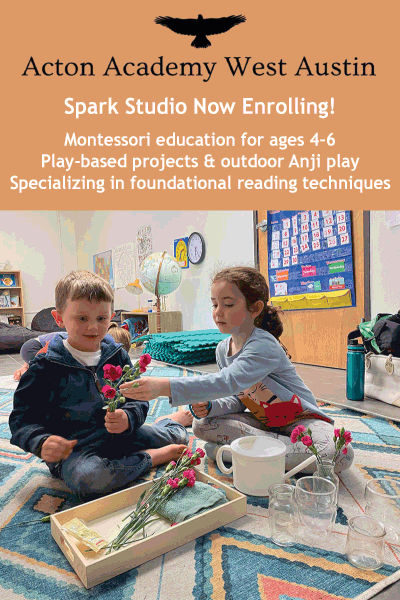Hack to School: Making the transition easier for the whole family (part 2)
/
If you missed the first installment of back-to-school hacks from Shelley Sperry and Mari Frost, which addressed tips and tricks in the food, shelter, and clothing categories, you can catch up here. All photos are by Mari Frost, a 15-year-old who attends high school in northern Virginia.
Our second set of back-to-school hacks is about easing into the school routine in ways that will make the transition better for your mind and body. For lots of kids that means moving from thinking of your computer, tablet, and phone as entertainment (Find those Pokemon!) to thinking of them as learning tools.
Tech Prep: Your Digital Health
We suggest taking an hour or two several days before school starts to set your family up on all computers, phones, and tablets for the school year:
When you get your school schedules (including extracurricular activities), put them on everyone’s phone (the easiest way is to just snap a photo of a paper schedule) and put paper copies in a spot that’s easy to find (a bulletin board, the front hallway, the good old fridge). And at the same time, make sure everyone has all important contact numbers updated, including the school office phone numbers.
If your kid is heading to a brand-new school, make the schedule or an annotated map his or her lock screen shot, so it’s always immediately available to glance at. And it doesn’t hurt to practice asking for help finding your way around the school—that’s not always easy for shy kids.
Students! Set up the bookmarks in your browser so you can easily get to Google Scholar, Google Books, and the public library’s search pages. Those are all better places to start than an ordinary Google search, if you’re doing research. And never forget to check .gov sites for information—you’ll often find terrific resources there. Use sites like the Library of Congress, the National Park Service, and the USGS for trustworthy information.
Avoid disaster now by making sure that your word processing software is automatically backing up anything you’re writing at least every couple of minutes. For real peace of mind, set up a cloud account where you keep all your papers and notes. Something like iCloud, Google Drive, Dropbox, or similar services are usually free for small amounts of storage, which is all you need for your school projects—unless you’re making a lot of videos or taking a lot of photos. Trust us—there will be a panicky moment when you’ll be extremely happy you have old drafts of a paper or notes saved in the cloud.
If you take notes mostly by hand, consider taking photos of the most important pages. You can then study anytime—on the way to pottery class or grandma’s house. You’ll always have them with you. Even if you much prefer to read paper books, it doesn’t hurt to invest in a few digital versions (or better yet, check digital copies out of the library) so that you can read a few pages of Catcher in the Rye while waiting for your Dad to get through the line at HEB.
Put a label with your name and school on your calculator and any other gadget you use regularly outside your house. If someone finds it, there will be no doubt it’s yours, and they can return it to the school. It should go without saying: Don’t put your home address or phone number on the label.
Wait until everyone is in a great mood, and then start a family discussion of the contentious subject of limits on screen time for the coming school year. Serve ice cream and cookies. Good luck.
Body Prep: Exercise and Sleep
A few days before school starts, try to get into the best falling-asleep-and-waking-up pattern for you. If you’re a kid or teen, eight hours is really the minimum you need to function well. We all love to cuddle with our phones and tablets, but try getting a regular alarm clock and putting the gaming, video-watching, texting, Instagraming device as far from your bed as possible so you’re not tempted to look at it at 3 a.m.
If you have superhuman self-control, and can have the device near your bed, you could try a sleep-cycle app that monitors your sleep and helps you determine the best time to wake up—but really, an old-fashioned simple alarm clock, your parents, or a pet that wants breakfast is the best alarm.
One thing that may help you de-stress and get a good night’s sleep AND will help the morning go more smoothly is taking a relaxing bath or shower the night before.
Consider making it a rule to eat a healthy snack and get some sort of exercise before starting homework. Kids often need a period of transition and relaxation when they get home from school. If they start immediately on homework or jump into fun screen time, they may not be at their most alert and efficient for the rest of the afternoon and evening. A routine of skateboarding, basketball, or biking outdoors—or dancing or yoga indoors—whatever gets them moving a little—will help energize them and make homework time easier.
Low Tech Prep: Handmade Fun
For young kids who are walking or taking a bus to and from school for the first time, spend a morning or afternoon creating a cool, illustrated map of the route and walking or driving it a couple of times so it becomes familiar. Find a friend in the neighborhood who will be your kid’s bus buddy or walking buddy as they get used to the new route. They may find other friends to walk and ride with later, but it’s great to start out with someone they know.
Walk around a new school, play on the playground or sports fields a few times, and look at photos of teachers online so that the school doesn’t feel strange on Day One.
Sometimes it’s non-academic things that stress us out the most, so spend a few hours at lunch or dinner brainstorming about the kind of extracurricular clubs and teams you might want to try and the service projects you want to do, if your school includes service as a requirement.
Make a COOL IDEAS folder for all the kids and hang up in their rooms or a common family area. Anyone in the family can toss in photos, articles from magazines, or random notes whenever they find something that might be helpful for school or extracurricular projects. For example, if you know your son likes getting outdoors in the mud and needs a community service project, clip out the calendar of watershed clean-up days and put it in the folder. If your daughter has to write and illustrate a paper on the Odyssey, jot down information about an art exhibit on ancient Greece you saw in a magazine. Set a time each week to sort through the folders and choose the ideas you’ll act on.
DIY Day: Think of something you know you’ll need when October, November, and December roll around and do a family craft night now, when you’re more relaxed than you’re likely to be in the middle of the fall. Make cute scarves and hand-warmers for cold morning walks to school out of fleece and rice. Get started on Halloween costumes. Make pennants you can wave at school football or basketball games. Create a place to display photos, playbills, and memories on kids’ bedroom walls using fishing line and clothespins or a DIY bulletin board out of an old picture frame.
Ahhhh, now we’re ready for the learning to start!
Shelley Sperry, with Mari Frost




















